Gamma conversions in forward region
A set of gamma rays were generated at the center of the target and tracked through the GlueX detector using HDGeant. The gamma momenta were generated
- uniform [0,6] GeV in energy,
- uniform [0,16] degrees in polar angle,
- uniform [0,360] degrees in azimuth.
The following figures show the position in (r,z) where the gamma conversions occurred. The shadows of the detector elements in the forward region are clearly seen, notably the CDC envelope, the FDC frames and cables, and the TOF, as well as the BCal (blue dots) and the FCal.
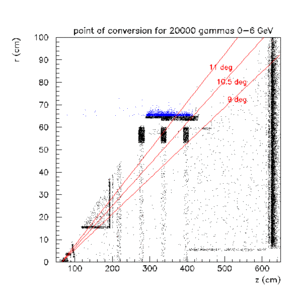
Projections onto z and r of this distribution are shown in the following figures. The peaks in these log plots are labeled by the detector element that produces them.
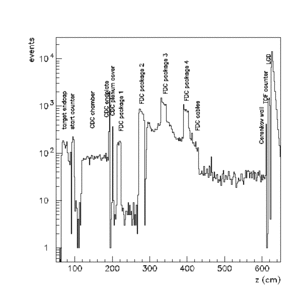
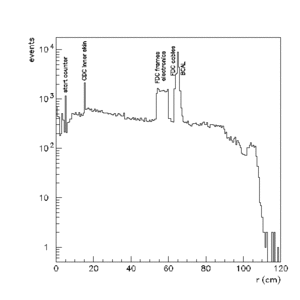
Conversions that occur inside the solenoid produce preshowers that may be difficult to reconstruct in the FCal. The next plot shows the size (in units of LGD blocks) of the energy deposition in the FCal, as measured by the second central moment

summed over both x and y. The typical RMS size of a shower produced inside the LGD is 2 cm, or one block radius.
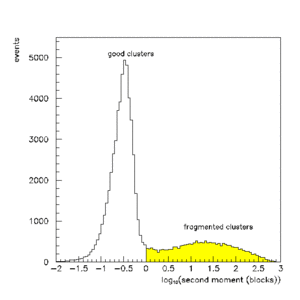
In what follows, the events in the main peak are called good showers while those in the shaded peak are called fragmented showers.
The distribution in generated polar angle of gammas producing fragmented showers is shown in the next plot.
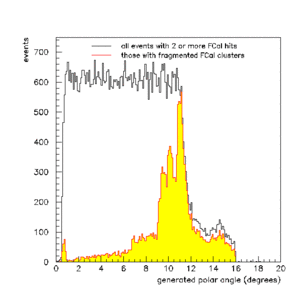
The conversion position for gammas producing good showers [fragmented showers] are shown by the black [red] points in the following plot.
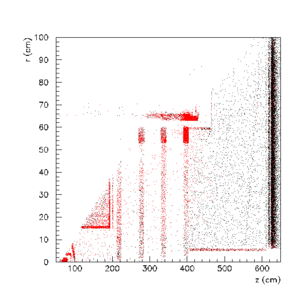
Images of individual events where conversions took place inside the solenoid and downstream near the face of the FCal. One can see that the correspondence between early conversion and fragmented showers is not perfect, but there is a clear correlation between the two.